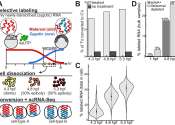Friction shapes zebrafish embryos
A simple ball of cells is the starting point for humans—and zebrafish. At the end of embryonic development, however, a fish and a human look very different. The biochemical signals at play have been studied extensively. ...








